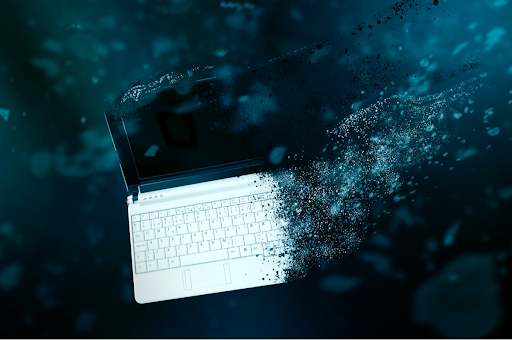Why Data Destruction is a Vital Element of Comprehensive Cyber Security
Why Data Destruction is a Vital Element of Comprehensive Cyber Security
Blog Article
The Significance of Effective Data Damage Practices in Safeguarding Sensitive Details and Ensuring Computer Safety
In an era where data breaches are progressively typical, the relevance of reliable information devastation practices can not be overstated. Organizations face considerable dangers when sensitive info is improperly dealt with, potentially causing unapproved accessibility and severe financial consequences. Carrying out durable information destruction approaches not just mitigates these risks but likewise lines up with lawful conformity needs, guaranteeing that organizations promote their reputation and foster client count on. However, the concern stays: what certain approaches can be used to boost these techniques, and just how can companies successfully incorporate them right into their general cybersecurity structure?
Recognizing Data Damage
Understanding information destruction is vital in today's digital landscape, where delicate information can easily be compromised. Reliable data damage includes not merely removing documents but ensuring that information is irretrievable through thorough methods. This process is essential for organizations that take care of confidential client details, copyright, or internal papers, as any kind of breach can result in serious economic and reputational consequences.
Data damage incorporates numerous strategies, including shredding physical media, degaussing magnetic storage gadgets, and using software-based solutions that overwrite data several times. Each technique offers a specific objective and should line up with the level of sensitivity of the details being gotten rid of. Physical devastation is usually liked for difficult drives having very confidential data, while software approaches could suffice for much less delicate info.
Additionally, adhering to industry standards and laws, such as the General Information Defense Guideline (GDPR) or the Health And Wellness Insurance Coverage Portability and Accountability Act (HIPAA), is vital for compliance and to mitigate legal risks. Organizations must create a durable data devastation plan, train workers on best practices, and regularly audit their treatments to guarantee that all sensitive details is thrown away safely and effectively.
Threats of Inadequate Practices
Insufficient data destruction techniques expose companies to considerable threats that can have far-reaching repercussions. When sensitive details is not appropriately gotten rid of, it remains prone to unauthorized gain access to, which can lead to information violations and identity theft. Such occurrences not only jeopardize the security of people but likewise tarnish the organization's credibility, causing a loss of customer trust fund and potential monetary effects.
Furthermore, governing compliance is progressively rigorous in numerous sectors. Failing to comply with information destruction policies can lead to hefty fines and lawful activities against companies. These penalties can strain funds and draw away attention from core business procedures.
Furthermore, the abuse of recurring information can cause intellectual building burglary or company reconnaissance, jeopardizing competitive advantages (data destruction). The effect of insufficient information destruction extends beyond instant monetary losses; it can likewise cause lasting damage to brand name stability and market placement

Organizations should acknowledge that data protection is not only about preventing breaches; it also encompasses the responsible management of information throughout its lifecycle. Neglecting reliable information devastation protocols can have devastating ramifications, highlighting the necessity for robust measures to mitigate these threats.
Ideal Practices for Information Damage
Applying reliable data destruction practices is essential for protecting delicate details and preserving conformity with governing requirements. Organizations ought to adopt a multi-faceted approach to make certain that information is irretrievable, consequently avoiding unauthorized accessibility and possible breaches.
First, information must be categorized based upon level of sensitivity, allowing companies to apply suitable destruction techniques tailored to the degree of risk. For digital data, utilizing software-based data-wiping devices that conform with market criteria can properly overwrite existing data. Physical destruction approaches, such as shredding or degaussing, are vital for devices that save sensitive information, making certain total eradication.
Establishing a clear information retention policy is essential, detailing for how long different sorts of information need to be retained before devastation. Regular audits of information storage space systems are also needed to identify out-of-date or unneeded information needing elimination.
Furthermore, training employees on the relevance of data destruction and the certain protocols to comply with fosters a society of security within Go Here the company. Ultimately, preserving documents of information destruction processes supplies liability and supports compliance with inner policies and outside guidelines. By sticking to these ideal practices, organizations can substantially alleviate the threats related to information exposure.
Legal and Compliance Considerations

Failing to comply with these guidelines can lead to severe penalties, consisting of significant fines and reputational damage. Organizations needs to apply a robust data damage plan that aligns with these legal frameworks and provides clear guidelines on the appropriate techniques of information disposal, whether physical shredding or digital cleaning.
Additionally, preserving paperwork of data devastation tasks is vital for showing conformity throughout audits or evaluations. By focusing on lawful and conformity considerations, organizations can enhance their data safety stance and foster trust with stakeholders and clients, ultimately adding to a more protected data management environment.
Benefits of Effective Data Destruction
Effective this post data devastation techniques prolong past simple compliance; they provide considerable benefits to organizations that prioritize them. By guaranteeing that sensitive information is irretrievably damaged, companies minimize the danger of information breaches and the prospective financial effects linked with them. This aggressive technique not only safeguards against unauthorized access but also boosts the general dependability of the organization in the eyes of stakeholders and clients.
Implementing durable data destruction methods, such as physical damage of storage devices or innovative information wiping strategies, adds to the conditioning of an organization's cybersecurity stance. data destruction. It minimizes the chance of intellectual home theft and shields exclusive info, thereby keeping a competitive edge in the market

Final Thought
In conclusion, reliable information damage practices are important for guarding delicate information and enhancing total computer safety and security. Inevitably, a dedication to robust information damage techniques cultivates a culture of responsibility, consequently strengthening a company's cybersecurity position and maintaining client trust.

Report this page